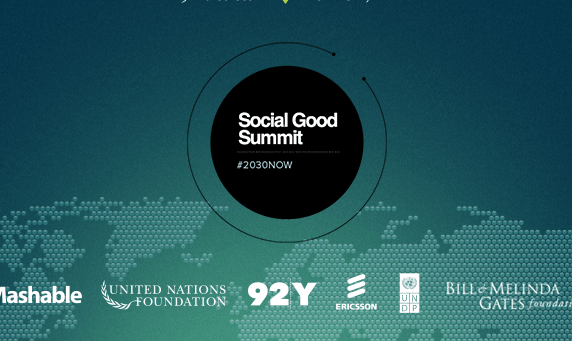Social Good Summit, New York – Representing two iconic American NGOs – the ACLU and Greenpeace – Anthony Romero and Phil Radford spoke to the crowd at Social Good Summit about how their organizations are working to engage the public in the digital age.
Organizations such as ACLU and Greenpeace – well-funded, well-known, respected – still face challenges that smaller, less known organizations deal with – how to effectively and broadly engage the public in their campaigns, how to ensure that information is disseminated, that people understand how they can take action. For Romero from ACLU, the path to effective digital engagement was not straightforward. A decade ago, he explained, the organization only had two, part-time, individuals who managed ACLU’s digital presence and activities. When it became clear that web-based, online engagement was critical for the organization, everyone in the organization became engaged, and “it was a mess”, he explained. Finally, ACLU decided to outsource their digital strategy in order to resolve the chaos.
Romero cited the example of his organization’s work on gay marriage in the United States. Many people, for example, are not aware of the ACLU’s role in DOMA getting struck down by the Supreme Court. But even more importantly, the public needs to get effective information about the issue – exposing the patchwork of laws, normalizing gay marriage in American society and highlighting progress – like the win against DOMA. The result, today, is an exciting new initiative – “My Big Fat Illegal Gay Marriage” – a major national effort to be rolled out over the next 6 months to marry 5 couples in iconic protest weddings in order to “highlight the absurd arbitrariness of the laws” governing marriage in the United States. This kind of engagement, argues Romero, is what gets people excited, engaged and provides an opportunity for education and information to be spread through non-traditional means. Indeed, he argues, recalling the time a Facebook millionaire told him the ACLU was a “dinosaur”, the age of direct mail for non-profit organizations is dead.
For his part, Radford summarized what Greenpeace views as the key elements of digital engagement today, and what shapes movements: 1. things that were taken away from us – like Occupy Wall Street, where people had lost their jobs. 2. Creating sparks and seeing what takes off, like Greenpeace’s recent effort to stop offshore drilling in the Arctic. And, 3. being opportunistic and able to move fast. Interestingly, none of these attributes typically define large institutions but rather small, flexible organizations.
At the heart of the approach prescribed by both Romero and Radford is the notion that well-established organizations need to be risk-takers and test new approaches to public engagement – light those “sparks” that Radford talks about. To remain meaningful in the digital age, large organizations will need to shed the institutional constraints that prevent them from innovating. As Jeremy Heimans, the founder of Purpose – the group that is helping design and run the ACLU’s “My Big Fat Illegal Gay Marriage” – institutions will need to modernize their model, reach new audiences and put digital advocacy at the heart of their activities.
